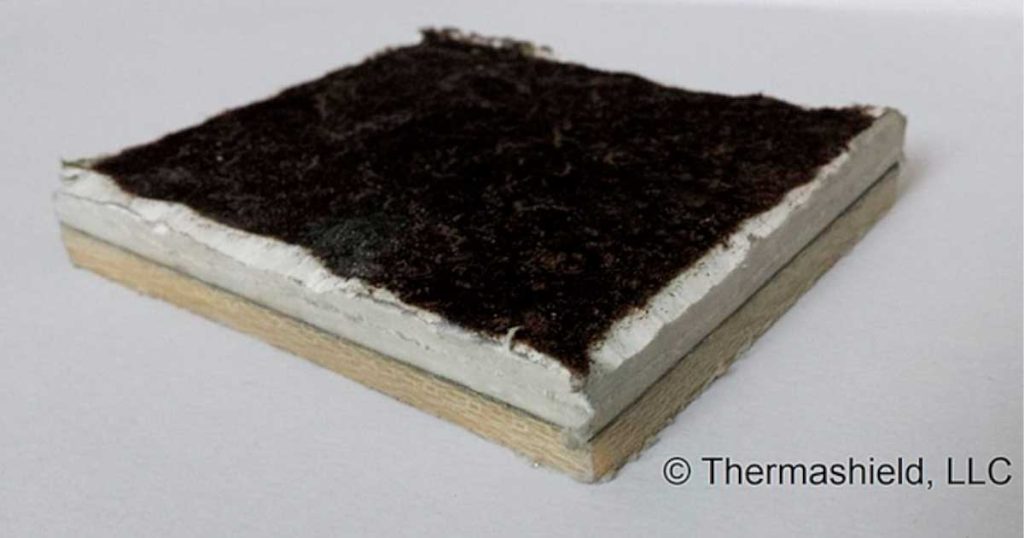Mankind’s ingenuity and inventiveness is unparalleled and many would be forgiven for thinking that our history has been a steady march of progress, with the line from ancient primitives to modern day sophistication being an unbroken and positive one. But this is hardly the case.
History is rarely so neat as all that, and we have lost much in the millennia of human civilization. Great empires have risen to conquer the known world, only to fall and barely leave a trace. Much of what we achieved, what we discovered, and what we did has been rolled over by time and lost forever.
This means that what does survive is sometimes for puzzling than enlightening, Old texts will occasionally refence customs, policies, people and inventions that, while clearly familiar to the original writer and their audience, baffle us. While the modern day can fill in many of the gaps, and we can sometimes make a guess at what was meant, some of this strangeness from out of our past will forever remain a mystery.
Here are ten of the strangest seemingly forgotten technologies from our history.
1. The Weapons of Archimedes
A huge lens that could destroy ships by directing and focussing the sun’s rays sounds like something out of a James Bond film (because it is). But millennia before Gusta Graves and his orbital weapon of mass destruction, the Greek mathematician and inventor Archimedes apparently built such a device, only this time for real.
This was not the only weapon of war Archimedes built, either. Records survive of a great claw, capable of lifting ships entirely out of the water, as well as siege towers and defensive catapults. But try as we might, modern science has not been able to rediscover how the great polymath did it.
Sadly, Archimedes did not survive long enough to pass on all of his secrets. Despite his weapons, pressed into service as the Romans attacked his city of Syracuse, the defenders were beaten back and the city fell. Archimedes himself, angrily complaining that a soldier had interrupted his calculations, was summarily killed.
2. Greek Fire
The Byzantines understood the pillars on which their great empire stood, and one of the key aspects of this was control of the Mediterranean. The Byzantine navy needed to be strong and fully capable of defending their interests from competing civilizations and marauding pirates, and in this they had a secret weapon: Greek Fire.
This was nothing less than a long-range nautical flamethrower, which used a secret recipe to launch fire material over enemy ships. The flames would not be put out by seawater and would coat whatever they touched, burning it to ash. The strange material would also be pressed into service during the crusades in clay pots, which were effectively early hand grenades.

Modern attempts to rediscover the secret of Greek Fire have met with very limited success. It seems that the secret to this devastating flame-based weapon died with the Byzantine Empire in 1453.
3. Vimana: Antigravity Machines
Unimpressed so far? Well how about literal flying palaces? Such antigravity machines, which seem so thoroughly implausible, are found in ancient Hindu texts where they are referred to as “vimana”.
Sometimes depicted as flying chariots, other times as swans holding up delicate pagoda-like structures, these vehicles contained a slew of technology which even today seem futuristic. Energy weapons, nuclear bombs, interplanetary travel and immense speeds were all possible in these flying machines.
Such craft are often dismissed as mythical, but this does not explain the numerous similarities between the descriptions of how they operated and our modern understanding of how such things would need to work. If they are only legend, then why did those who described them get so much so right?
4. Silphium
The Romans had a secret drug, and if we are to believe everything that is written about silphium, it could do almost anything. Primarily famed as a contraceptive and aphrodisiac combo (and what a combo!), this drug could also cure any number of other ailments.
The Romans wore it as a perfume, seasoned their food with it owing to its pleasant taste, wrote songs about it, and rated it so highly that they believed it a gift from Apollo. The Roman city of Cyrene, in north Africa, was entirely dependent on silphium for its economy, and even depicted it on their coinage.
From this and other descriptions we know that silphium was a plant of some kind, and it was the resin that was important. Sadly though the identity of the plant remains a mystery, as it seems that the Romans in their desire for it harvested it to extinction. Whatever silphium was, it is gone now.
5. Manna from Heaven
The Bible is not the most solid source material for historical accuracy, and generations of scholars have tied themselves in knots trying to link the stories therein to the archaeological record. Most currently fall into two camps, the first considered the Bible to be fiction, and the second smaller group believing that our dating of the ancient past requires serious revision.
One of the trickier passages comes from Exodus and the 40 years that Moses spent leading his Hebrew ex-slaves around the desert of the Sinai peninsula. 40 years is a long time to spend in the wilderness, but happily the Bible tells us how they survived: they ate “manna”.
This white, waxy substance was said to coat the ground every morning like a dew, and could be harvested. It was nutritious, plentiful, safe to eat, and entirely unknown to modern science. There have been a few guesses as to what it might be such as resin from native trees, but even the name itself means “what is it”.
It seems the authors of the Bible were as much in the dark as we are.
6. Starlite and Firepaste
Starlite is a distressingly modern loss, as its British inventor Maurice Ward died in 2011. A mercurial and secretive man, Ward’s invention demonstrated extreme heat resistance and other unusual thermal properties. How it was made was never publicly revealed.

Firepaste, with extremely similar properties, was invented by Canadian scientist Troy Hurtubise, apparently accidentally when one of his other inventions, a suit resistant to bear attacks, caught fire. A white substance that expanded rapidly when exposed to heat, Hurtubise also took the secret to his grave when he died in 2018.
Both of these materials have far-reaching uses across a variety of fields, but efforts to reproduce either have met with only limited success. Hopefully one day the secrets will be rediscovered.
7. Panjagan
For 300 years from the 3rd century AD, the Sasanian Persian army was the cutting edge in warfare techniques and equipment. Perhaps the most enigmatic of the latter is what Islamic author al-Tabari calls “panjagan”, used as a surprise weapon against the Aksumites of Ethiopia.
- (In Pics) Ten Great Lost Civilizations of Peru that aren’t the Inca
- Mutually Assured Destruction: Has it Happened Before?
Apparently an implausible hybrid of a ballista and a machine gun, the panjagan could fire a volley of five arrows at once. Panjagan means “five fold” and the weapons offered a decisve advantage over the Persian’s enemies. It is also possible that the panjagan were smaller, man-portable devices, and would have been devastating against foes armed with hand-to-hand weaponry if fired en-masse.
We know the Chinese used a type of repeating crossbow which may have been similar to the panjagan. But no example survives of this enigmatic weapon, and we have no idea what it was.
8. Teleforce
Nikola Tesla has become the poster child for alternative, ground-breaking technologies. His radically different approach to electronics through the preferred use of alternating current (AC) over the alternative direct current (DC) as supported by his great rival Thomas Edison, drove research in very unusual directions.

Tesla is believed to have followed this line of research and made several important discoveries along the way. Perhaps one of the most famous is his weaponized application of his technology, called “Teleforce” by Tesla and described as a “death ray” by the press.
Using static charges, this weapon could launch pellets of material at incredibly high speeds. Sadly, his attempts at developing the weapon failed, although as late as 1940 the 84-year-old inventor was still keen to sell it. Tesla died in 1943, and with modern attempts to build a “rail gun” generally meeting with mixed success, it seems that his expertise would have been invaluable, if anyone had thought to listen at the time.
9. Roman Concrete
The Romans loom large in the collective consciousness, and with good reason. But you have to ask: would they hold so strong a position in history were it not for what they left behind? Other civilizations, perhaps never so large or so long lived, have come and gone without a fraction of the impact that the Romans have on the world today.

Part of the reason is visual: the Romans left behind a multitude of buildings, rivalled only by the Egyptians in their scope, size and longevity. These buildings were made of a wonder material: Roman concrete. And while modern concrete degrades over at most a century, Roman concrete can last almost indefinitely.
Shockingly, we know why this is, and how to make Roman concrete. Seawater reacted with the materials used in the concrete, forming an extreme strong and durable crystalline material. The problem is that this takes centuries to develop. So the question is not how to make this material, but how to make it quickly enough for today’s throwaway, fast paced society.
10. Flexible Glass
Smartphone manufacturers should pay close attention to this one, as flexible glass is nothing new. Called “vitrum flexile” by the Romans (of course it’s the Romans again), a bowl of the material was presented to the Emperor Tiberius.
The Emperor attempted to break the bowl, only to find that it did not shatter but instead dented. Its inventor then produced a jeweller’s hammer which he used to quickly knock the bowl back into shape, to the amazement of the court.
Tiberius however was not impressed, and feared that the invention would upset the current social order (of which he was the head) by potentially devaluing gold and silver, the source of his riches and therefore his authority. After confirming that the inventor was the only man to know the secret of flexible glass, Tiberius promptly had him executed.
Top Image: The mirror of Archimedes which could destroy enemy ships from afar. Source: Giulio Parigi / Public Domain.
By Joseph Green